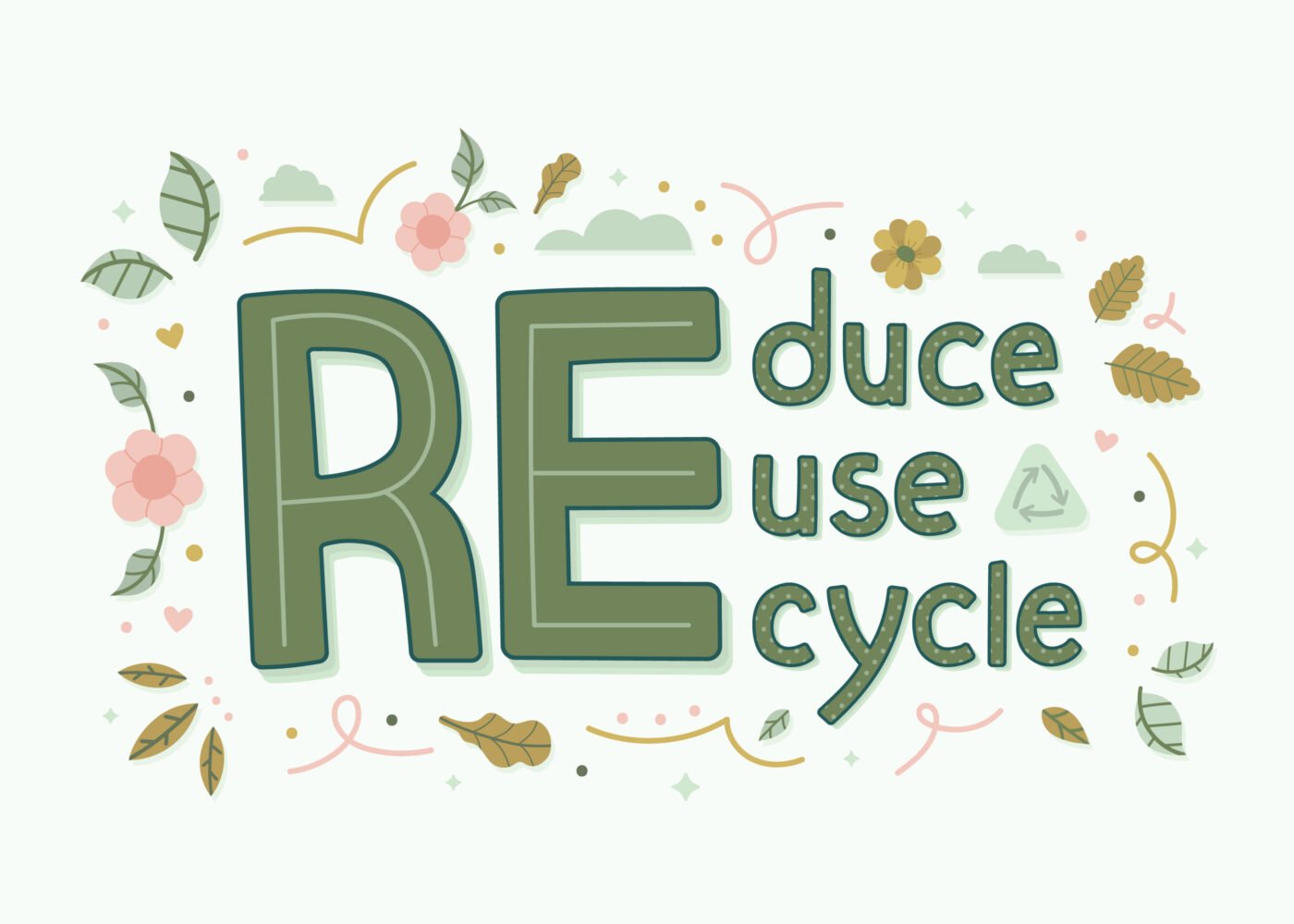We’re living in a time when the planet needs our attention more than ever. Between climate change, overflowing landfills, and dwindling natural resources, it’s easy to feel overwhelmed. But here’s the good news: meaningful change doesn’t have to be complicated. By making small, eco-friendly lifestyle changes in your everyday routine, you can reduce your impact and live a healthier, more intentional life.
This isn’t about being perfect—it’s about making progress. So, let’s look at practical, easy ways to live more sustainably, starting right where you are.
1. Use Energy Smarter at Home

The first step toward an eco-friendly lifestyle begins at home. Take a quick look around your living space—how many things are plugged in right now but not being used? Turning off lights, fans, and appliances when they’re not needed might sound simple, but over time, it adds up.
Switch to LED bulbs if you haven’t already, and make sure your appliances are energy efficient. Try washing clothes in cold water, air-drying laundry when the weather allows, and taking shorter showers to conserve energy and water. If you can, invest in solar panels or explore renewable energy options available in your area.
These little actions may seem small, but collectively, they save energy, reduce bills, and lower your carbon footprint.
2. Practice the “Reduce, Reuse, Recycle” Mindset

If you only remember one thing, make it this: waste less. One of the most effective eco-friendly lifestyle changes is to be more mindful of what you buy, use, and throw away.
Before you purchase something new, pause and ask yourself—do I really need it? Could I borrow it, buy it secondhand, or fix something I already own instead? This simple shift can cut clutter, save money, and reduce unnecessary waste.
When you do buy, look for durable, long-lasting products instead of disposable ones. Carry a reusable water bottle, coffee cup, and shopping bag. Avoid single-use plastics whenever possible. Recycling is great, but the truth is, reducing and reusing are even more powerful steps toward sustainability.
3. Eat with the Planet in Mind
What we eat has a bigger impact on the environment than most of us realize. Agriculture, especially livestock production, is one of the biggest contributors to greenhouse gas emissions. You don’t have to go vegan overnight, but simply eating less meat—even one or two days a week—can make a difference.
Try introducing more plant-based meals into your routine. Load up on vegetables, legumes, and whole grains. Not only will your plate be more sustainable, but your body will thank you too.
Buying local and seasonal produce also reduces the energy used in transporting food long distances, and it supports farmers in your community. And don’t forget about food waste—plan your meals, store food properly, and compost scraps if you can. Every bit counts.
4. Rethink How You Get Around
Transportation is one of the biggest contributors to carbon emissions, but small changes in your daily habits can create a real impact.
If your destination is nearby, try walking or cycling instead of driving. You’ll get exercise, save money, and cut down on pollution all at once. When longer distances are involved, public transportation, carpooling, or ride-sharing can significantly reduce your footprint.
If working from home is an option for you, even one or two days a week can reduce your commute and emissions. And when it’s time to upgrade your car, consider a hybrid or electric option.
The key is to travel more thoughtfully—choose the greener route whenever possible.
5. Create a Greener Home Environment
Your home should be your sanctuary, and making it more eco-friendly can boost both your wellbeing and the planet’s.
Start by switching to non-toxic, natural cleaning products—they’re better for your health and don’t release harmful chemicals into the air or water. Open windows for ventilation, and add indoor plants to naturally purify the air and bring a calming, natural feel to your space.
When decorating or renovating, consider materials like bamboo, reclaimed wood, or recycled metal. Even small touches, like using eco-friendly paints or sustainable fabrics, can make a difference.
If you have a garden or balcony, try planting herbs, flowers, or native plants. Gardening connects you to nature, supports pollinators, and adds beauty to your surroundings.
6. Shop with Intention

Shopping sustainably doesn’t mean never buying anything new—it means buying smarter. Look for quality over quantity, supporting brands that prioritize ethical sourcing and sustainable materials.
Fast fashion, for example, is one of the biggest environmental offenders. Instead of chasing every new trend, try curating a timeless wardrobe filled with versatile, well-made pieces. You can also explore thrift stores or clothing swaps—they’re fun, budget-friendly, and reduce waste.
For household items, consider buying in bulk, avoiding excess packaging, and supporting local makers who use eco-conscious practices.
7. Shift Your Mindset
The most powerful eco-friendly lifestyle change doesn’t cost a cent—it’s changing how you think. Sustainability isn’t a strict rulebook; it’s a mindset of mindfulness and respect for the world around you.
Instead of seeing green living as a burden, view it as an opportunity to live with purpose. Notice the little wins—fewer plastic bottles in your trash, lower energy bills, more fresh air from walking instead of driving.
No one can do everything, but everyone can do something. Your efforts, combined with millions of others making similar changes, create a ripple effect that truly matters.
Final Thoughts
Adopting eco-friendly lifestyle changes isn’t about perfection—it’s about intention. Each choice, no matter how small, shapes a more sustainable future for you and for generations to come.
Start with one or two changes that feel doable, and let them become part of your routine. Over time, these choices will blend naturally into your lifestyle. You’ll find yourself living more consciously, saving money, and feeling more connected to the world around you.
The truth is, sustainability feels good. Once you start, you’ll wonder why you didn’t begin sooner.




Leave a Comment